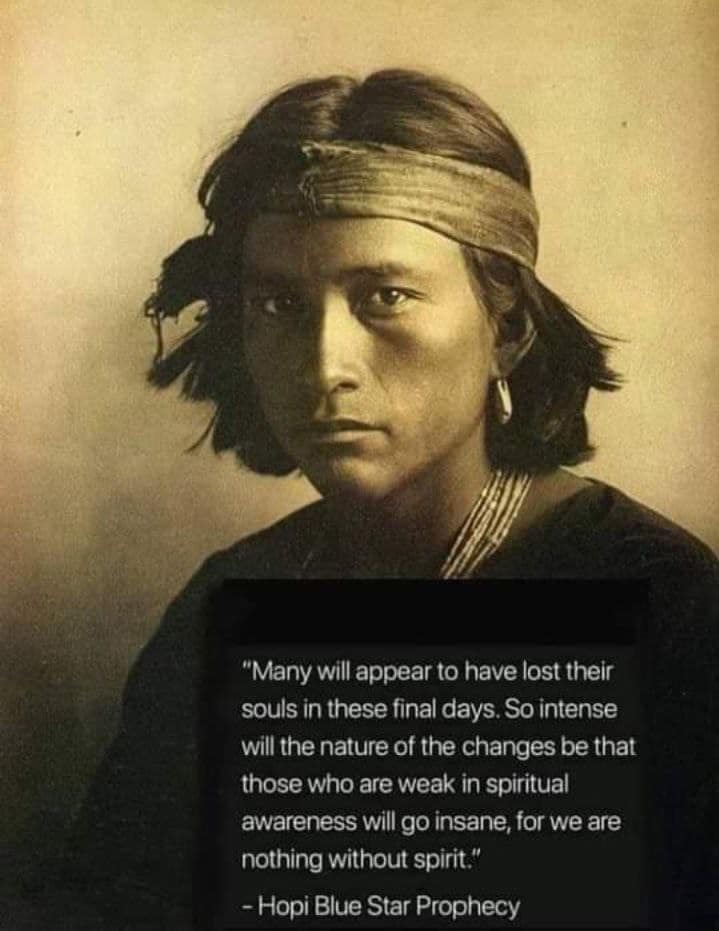Blog
Frank Wellington Wess (January 4, 1922 – October 30, 2013 KC, MO) was an American jazz saxophonist and flutist. He was renown for his extensive solo work; however, he was also remembered for his time playing with Count Basie’s band during the early 1950s into the early 1960s. Critic Scott Yanow described him as one of the premier proteges of Lester Young, and a leading jazz flutist of his era—using the latter instrument to bring new colors to Basie’s music.
more...Earth’s orbit around the Sun is not a circle, it’s an ellipse. The point along its elliptical orbit where our fair planet is closest to the Sun is called perihelion. This year perihelion is today, January 4, at 13:28 UTC, with the Earth about 147 million kilometers from the Sun. For comparison, at aphelion on last July 3 Earth was at its farthest distance from the Sun, some 152 million kilometers away. But distance from the Sun doesn’t determine Earth’s seasons. It’s only by coincidence that the beginning of southern summer (northern winter) on the December solstice – when this H-alpha picture of the active Sun was taken – is within 14 days of Earth’s perihelion date. And it’s only by coincidence that Earth’s perihelion date is within 11 days of the historic perihelion of NASA’s Parker Solar Probe. Launched in 2018, the Parker Solar Probe flew within 6.2 million kilometers of the Sun’s surface on 2024 December 24, breaking its own record for closest perihelion for a spacecraft from planet Earth.

John McLaughlin (born 4 January 1942), also known as Mahavishnu, is an English guitarist, bandleader, and composer. A pioneer of jazz fusion, his music combines elements of jazz with rock, world music, Western classical music, flamenco, and blues. After contributing to several key British groups of the early 1960s, McLaughlin made Extrapolation, his first album as a bandleader, in 1969. He then moved to the U.S., where he played with drummer Tony Williams‘s group Lifetime and then with Miles Davison his electric jazz fusion albums In a Silent Way, Bitches Brew, Jack Johnson, Live-Evil, and On the Corner. His 1970s electric band, the Mahavishnu Orchestra, performed a technically virtuosic and complex style of music that fused electric jazz and rock with Indian influences.
McLaughlin’s solo on “Miles Beyond” from his album Live at Ronnie Scott’s won the 2018 Grammy Award for the Best Improvised Jazz Solo. He has been awarded multiple “Guitarist of the Year” and “Best Jazz Guitarist” awards from magazines such as DownBeat and Guitar Player based on reader polls. In 2003, he was ranked 49th in Rolling Stone magazine’s list of the “100 Greatest Guitarists of All Time“. In 2009, DownBeat included McLaughlin in its unranked list of “75 Great Guitarists”, in the “Modern Jazz Maestros” category. In 2012, Guitar World magazine ranked him 63rd on its top 100 list. In 2010, Jeff Beck called McLaughlin “the best guitarist alive”, and Pat Metheny has also described him as the world’s greatest guitarist. In 2017, McLaughlin was awarded an honorary doctorate of music from Berklee College of Music.
more...Norberto “Noro” Morales (January 4, 1911 – January 15, 1964) was a Puerto Ricanpianist and bandleader.
Morales was born in the subbarrio Puerta de Tierra of San Juan, Puerto Rico to father Luis Morales Barada, a musician, and mother Mercedes Sanabia, a tailor. Growing up in a musical family, Morales learned multiple instruments as a child, including the trombone, bass, and the piano. He played in Venezuela from 1924 to 1930, then returned to Puerto Rico to play with Rafael Muñoz. He emigrated to New York City in 1935, and played there with Alberto Socarras and Augusto Cohen. In 1939, he and brothers Humberto and Esy put together the Brothers Morales Orchestra. He released the tune “Serenata Ritmica” on Decca Records in 1942, which catapulted him to fame in the Latin music scene, then dominated by rhumba and later by mambo. His band rivaled Machito‘s in popularity in New York in the 1940s. Like his brothers, Morales suffered from diabetes and, by the early 1960s, he was severely obese and nearly blind. He died of uremia on January 15, 1964, at Hospital San Jorge, in San Juan, aged 53. He was buried in Puerto Rico Memorial (also known as Cementerio Fournier) in Carolina, Puerto Rico.
more...Pablo Rodríguez Lozada (January 4, 1923 – February 28, 1973), better known as
Tito Rodríguez, was a Puerto Rican singer and bandleader. He started his career singing under the tutelage of his brother, Johnny Rodríguez. In the 1940s, both moved to New York, where Tito worked as a percussionist in several popular rhumbaensembles, before directing his own group to great success during the 1950s. His most prolific years coincided with the peak of the mambo and cha-cha-cha dance craze. He also recorded boleros, sones, guarachas and pachangas.
Rodríguez is known by many fans as “El Inolvidable” (The Unforgettable One), a moniker based on his most popular song, a bolero written by Cuban composer Julio Gutiérrez.
Rodríguez returned to Puerto Rico in 1966 and built a Japanese-style house in Ocean Park, Santurce, where he lived with his family. Rodríguez produced his own television show called “El Show de Tito Rodríguez” which was transmitted through San Juan’s television Channel 7 (whose call letters were WRIK-TV at the time). Among the guest stars that appeared on his show were Sammy Davis Jr., Tony Bennett, Shirley Bassey, Roberto Clemente and Orlando Cepeda. Rodríguez also founded his own recording studio/label called TR Records.
Rodríguez’s last public appearance was with Machito and his band on February 2, 1973, at Madison Square Garden in New York City.
more...Friday January 3rd 2025 6pm Erev Shabbat Service music with Inbal Sharett-Singer, Jayson Rodovsky, Jeff Bailey, Pete Whitman and mick LaBriola.
more...Near the outskirts of the Small Magellanic Cloud, a satellite galaxy roughly 200 000 light-years from Earth, lies the young star cluster NGC 602, which is featured in this new image from the NASA/ESA/CSA James Webb Space Telescope. This image includes data from Webb’s NIRCam (Near-InfraRed Camera) and MIRI (Mid-InfraRed Instrument). The local environment of this cluster is a close analogue of what existed in the early Universe, with very low abundances of elements heavier than hydrogen and helium. The existence of dark clouds of dense dust and the fact that the cluster is rich in ionised gas also suggest the presence of ongoing star formation processes. This cluster provides a valuable opportunity to examine star formation scenarios under dramatically different conditions from those in the solar neighbourhood. [Image description: A star cluster is shown inside a large nebula of many-coloured gas and dust. The material forms dark ridges and peaks of gas and dust surrounding the cluster, lit on the inner side, while layers of diffuse, translucent clouds blanket over them. Around and within the gas, a huge number of distant galaxies can be seen, some quite large, as well as a few stars nearer to us which are very large and bright.]

John Paul Jones (born John Baldwin; 3 January 1946) is an English musician, songwriter, and record producer who was the bassist and keyboardist for the rock band Led Zeppelin.
He was a session musician and arranger when he formed the band with Jimmy Page in 1968. Jones developed a solo career after drummer John Bonham died and Led Zeppelin disbanded in 1980. He has collaborated with musicians in a variety of genres, including the supergroup Them Crooked Vultures with Dave Grohl, Josh Homme, and Alain Johannes. He was inducted into the Rock and Roll Hall of Fame in 1995 as a member of Led Zeppelin.
more...Stephen Arthur Stills (born January 3, 1945 Dallas, TX) is an American musician, singer, and songwriter best known for his work with Buffalo Springfield, Crosby, Stills & Nash, and Manassas. As both a solo act and member of three successful bands, Stills has combined record sales of over 35 million albums. He was ranked number 28 in Rolling Stone‘s 2003 list of “The 100 Greatest Guitarists of All Time” and number 47 in the 2011 list. Stills became the first person to be inducted twice on the same night into the Rock and Roll Hall of Fame. According to Neil Young, “Stephen is a genius”.
Beginning his professional career with Buffalo Springfield, he composed “For What It’s Worth,” which became one of the most recognizable songs of the 1960s. Other notable songs he contributed to the band were “Sit Down, I Think I Love You“, “Bluebird“, and “Rock & Roll Woman”. According to bandmate Richie Furay, Stills was “the heart and soul of Buffalo Springfield”.
After Buffalo Springfield disbanded, Stills began working with David Crosby and Graham Nash as the trio called Crosby, Stills & Nash (CSN). In addition to writing many of the band’s songs, Stills played bass, guitar, and keyboards on their debut album. The album sold over four million copies and at that point had outsold anything from the three members’ prior bands: the Byrds, Buffalo Springfield, and the Hollies. The album won the trio a Grammy Award for Best New Artist.
Stills’ first solo album, Stephen Stills, earned a gold record and is the only album to feature both Jimi Hendrix and Eric Clapton. Its hit single “Love the One You’re With” became his biggest solo hit, peaking at number 14 on the Billboard Hot 100. Stills followed this with a string of solo albums, as well as starting a band with Chris Hillmancalled Manassas in 1972. In summer 1974, Young reunited with CSN after a four-year hiatus for a concert tour that was recorded and released in 2014 as CSNY 1974. It was one of the first stadium tours and the largest tour the band has done to date. CSN reunited in 1977 for their album CSN, which became the trio’s best-selling record. CSN and CSNY continued to have platinum albums through the 1980s.
more...John Jenkins (January 3, 1931 – July 12, 1993) was an American jazz saxophonist.
Born in Chicago, Jenkins initially studied clarinet in high school but switched to saxophone after six months on the instrument. He played in jam sessions led by Joe Segal at Roosevelt College from 1949 to 1956. He played with Art Farmer in 1955 and led his own group in Chicago later that year. In 1957, he played with Charles Mingusand recorded two albums as a leader. He played as a sideman with Johnny Griffin, Donald Byrd, Hank Mobley, Paul Quinichette, Clifford Jordan, Sahib Shihab, and Wilbur Ware in the late 1950s and early 1960s, but essentially dropped out of music after 1962, aside from a few dates with Gloria Coleman.
more...Herbert Horatio Nichols (January 3, 1919 – April 12, 1963) was an American jazzpianist and composer who wrote the jazz standard “Lady Sings the Blues“. Obscure during his lifetime, he is now highly regarded by many musicians and critics.
He was born in San Juan Hill, Manhattan, New York, United States, to parents from St. Kitts and Trinidad, and grew up in Harlem. During much of his career, he took work as a Dixieland musician while also pursuing the more adventurous kind of jazz he preferred. He is best known today for music that combines bop, Dixieland, and music from the Caribbean with harmonies from Erik Satie, Béla Bartók and other modernist composers.
more...Compared to other toques, flamenco fandangos have a shorter rhythmic cycle that may feel more familiar to musicians trained in classical or other Western music styles. Fandangos are an early form of flamenco music, influenced from Arab-Moorish music and Portuguese fado music. Flamenco Fandangos are generally festive and upbeat.
Fandangos have a 3/4 rhythm (previously 6/8, now 3/4 or 3/8), with an accent on the first beat. Most Fandangos are very metric and appropriate for dance. A common compás that can be felt is made up of 12 beats (2×6). However, others may have more of a free-form feeling (known as en toque libre or “very freely”).
There’s also a variety of regional Fandangos, known as fandangos locales, each with their own style and character.
more...More Posts
- Harry Chapin
- Tom Waits
- Mads Vinding
- Louis Prima
- World Music Cheb Khaled, Faudel & Rachid Taha
- Daily Roots Rod Taylor
- Cosmos M16
- Miroslav Vitouš
- Eddie Gladden
- Francis Frankie Dunlop
- Dave Brubeck
- World Music Baba Commandant and the Mandingo Band
- Daily Roots King Tubby & The Soul Syndicate
- Egberto Gismonti
- Cosmos M45
- Camarón de la Isla
- J J Cale
- Art Davis
- Little Richard
- World Music VIMMA



